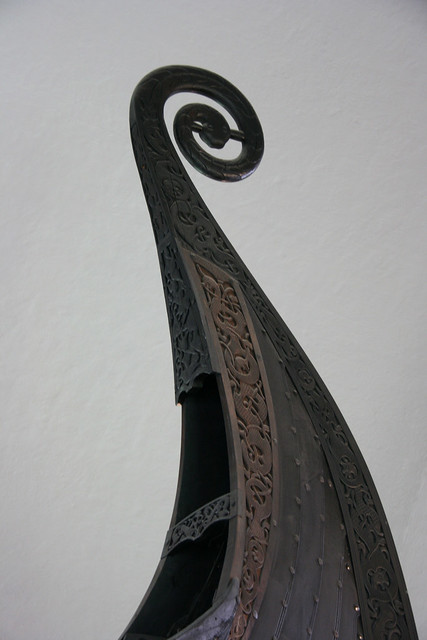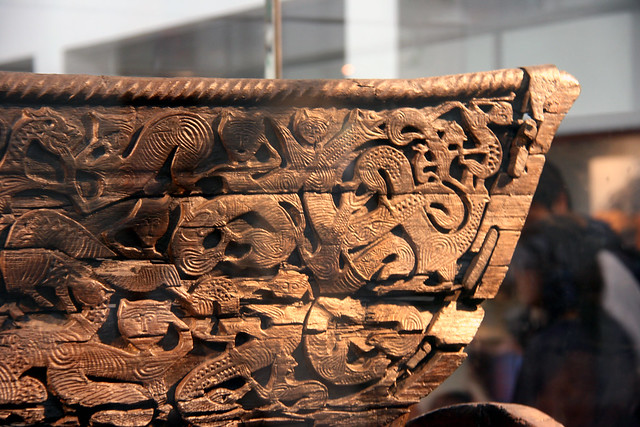During our stay in Oslo, we ferried over to Bygdøy peninsula where we spent the day visiting several impressive cultural and historical museums. The Oslo Pass proved to be a great investment because it was accepted on the public ferry to Bygdøy and at all the museums here.
The Viking Ship Museum was a great treat for my brother-in-law because, like his father did, he works on the San Francisco Bay every day. We say that he has salt water running through his veins, no doubt a trait that passed down from his Norwegian ancestors.
The Oseberg Viking Longship
The Oseberg Viking longship is the world’s most complete ship ever found. A farmer discovered the ship in 1903 while he was digging in a mound on his farm. The following summer, Swedish archeologist Gabriel Gustafson led an excavation team for five months until the last piece of the the 70-foot longship was unearthed. The blue clay of the mound preserved the wood for longer than a millenium.
 |
| Image: Univeristy of Oslo |
It was determined that the ship dates from before the year 800 and that she was buried since 834. Conservators spent twenty-one years meticulously restoring the ship using almost all of the original wood and even many of the original iron rivets. Unfortunately, the conservation method of boiling the oak in a concentrated solution of alum rendered the wood brittle as crisp bread. In 1926, the delicate ship was moved to her new, custom-made home where she still stands today.
 |
| Image: Univeristy of Oslo |
She is housed in the first room of the Viking Ship Museum which is bathed in a beautiful blend of natural and understated man-made lighting with a ceiling that is shaped like an upside down ship hull. As I was taking the photo at the top of this post, my son sidled up next to me and suggested that I take a couple of steps to the left. Then I saw what he saw...
...a shadow twin.
The frond-like prow ...
.... turned out to be the head of a serpent...
A giant serpent emerging out of the fog would feed any fears and “confirm” numerous sightings of legendary sea monsters.
The Oseberg was thought to only be seaworthy enough for coastal voyages. A full-scale copy of the ship sank in the Mediterranean Sea during trials in 1987. The New Oseberg Ship Foundation hopes to make new replica.
The Oseberg's elaborate ornamentation suggests its use as a ritual vessel and, in fact, the ship was used as a burial chamber. When found, it contained the remains of two women with livestock and objects to be used for the afterlife. The opulence of the grave goods in the ship and the attire of the women suggested that at least one of them was of very high status. They even unearthed the remains of a peacock which must have been an exotic pet.
The Oseberg Cart
The women were reburied in the original Oseburg mound, but many of the artifacts are on display in the museum. The extravagantly-carved Oseberg cart is the oldest known vessel with wheels in Norway.
It is believed that the artist who carved the decorations of the Oseberg ship also executed the carvings on the cart. The front of the cart depicts a pit of snakes...
...surrounding a man believed to be Gunnar in the snake pit of Viking mythology.
Gunnar was chained and thrown into a pit of snakes but played a harp with his toes so well that all but one snake were lulled to sleep. Tragically, the final adder killed him.









